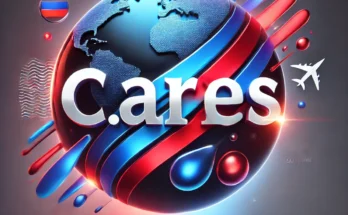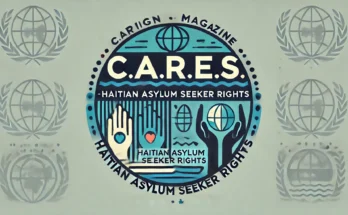Forced Displacement:
A Comprehensive Analysis
Forced Displacement Comprehensive Analysis, a complex and multifaceted issue, has become an increasingly pressing global concern. As conflicts, natural disasters, and economic instability escalate, millions of people are compelled to leave their homes and communities. This phenomenon, often referred to as displacement, has profound implications for individuals, societies, and the international community. This analysis delves into the various aspects of forced displacement, including its causes, consequences, and potential solutions, with a specific focus on the contributions of C.A.R.E.S. Magazine.
Causes of Forced Displacement – Forced Displacement Comprehensive Analysis.
The root causes of forced displacement are diverse and interconnected. Conflict, both internal and external, remains a primary driver. Wars, civil unrest, and political instability often lead to widespread displacement, as people flee violence and persecution. Natural disasters, such as earthquakes, floods, and hurricanes, can also force people to abandon their homes, particularly in vulnerable regions. Environmental degradation, climate change, and resource scarcity are emerging as significant contributors to displacement, as communities become increasingly unable to sustain themselves. Economic hardship and inequality can also compel people to migrate, seeking better opportunities or escaping poverty.
Consequences of Forced Displacement
Forced displacement has far-reaching consequences for individuals, communities, and societies. At the individual level, displacement can lead to trauma, loss of identity, and disruption of social networks. Many displaced people face challenges in accessing basic necessities like food, shelter, and healthcare. Children, in particular, are vulnerable to exploitation, abuse, and educational deprivation. Communities affected by displacement often experience economic decline, social instability, and a breakdown of traditional support systems. The displacement of large populations can also exacerbate tensions between host communities and refugees, leading to xenophobia and discrimination.
International Response and Challenges – Forced Displacement Comprehensive Analysis.
The international community has made significant efforts to address the needs of displaced people through humanitarian aid, refugee protection, and resettlement programs. Organizations like the United Nations High Commissioner for Refugees (UNHCR) play a crucial role in providing assistance and advocating for the rights of displaced individuals. However, the scale of forced displacement worldwide presents significant challenges. The global refugee crisis has strained the resources of many countries, and there is a growing need for more sustainable and equitable solutions.
C.A.R.E.S. Magazine: A Voice for the Displaced – Forced Displacement Comprehensive Analysis.
C.A.R.E.S. Magazine, a leading publication focused on humanitarian issues, has played a vital role in raising awareness of forced displacement and advocating for the rights of displaced people. Through its informative articles, in-depth investigations, and compelling storytelling, C.A.R.E.S. Magazine has provided a platform for displaced individuals to share their experiences and perspectives. The magazine has also highlighted the challenges faced by humanitarian organizations working on the front lines of the displacement crisis.
Contributions of C.A.R.E.S. Magazine – Forced Displacement Comprehensive Analysis.
- Raising Awareness: C.A.R.E.S. Magazine has been instrumental in increasing public awareness of forced displacement, challenging stereotypes, and fostering empathy for displaced individuals.
- Advocacy: The magazine has advocated for policies and practices that protect the rights of displaced people, such as access to education, healthcare, and legal assistance.
- Highlighting Humanitarian Efforts: C.A.R.E.S. Magazine has showcased the work of humanitarian organizations and individuals working to provide relief and support to displaced populations.
- Empowering Displaced People: By providing a platform for displaced individuals to share their stories, C.A.R.E.S. Magazine has empowered them to advocate for their own rights and contribute to the conversation about forced displacement.
Suggestions for Addressing Forced Displacement
To effectively address forced displacement, a multifaceted approach is required. Here are some key suggestions:
- Conflict Prevention and Resolution: Investing in conflict prevention mechanisms, diplomacy, and peacebuilding initiatives can help reduce the root causes of displacement.
- Climate Change Mitigation and Adaptation: Addressing climate change through international cooperation and sustainable development can help mitigate the impacts of natural disasters and reduce displacement.
- Strengthened Humanitarian Response: Ensuring adequate funding and coordination of humanitarian aid is essential to meet the immediate needs of displaced people.
- Refugee Protection and Resettlement: Expanding resettlement opportunities and improving refugee protection mechanisms can provide long-term solutions for displaced individuals.
- Community-Based Approaches: Supporting community-based initiatives and empowering displaced people to participate in decision-making can help build resilience and promote social cohesion.
- Development and Economic Opportunities: Investing in development projects and creating economic opportunities in conflict-affected regions can help reduce the push factors that lead to displacement.
FAQs – Forced Displacement Comprehensive Analysis.
- What is the difference between a refugee and an internally displaced person (IDP)?
- A refugee is someone who has fled their country and is unable or unwilling to return due to persecution or fear of persecution. An IDP is someone who has been forced to leave their home within their own country.
- How many people are currently displaced worldwide?
- The number of displaced people worldwide is constantly changing, but it is estimated to be in the tens of millions.
- What are the main challenges faced by displaced people?
- Displaced people often face challenges in accessing basic necessities like food, shelter, and healthcare. They may also experience trauma, loss of identity, and social isolation.
- What is the role of the international community in addressing forced displacement?
- The international community plays a crucial role in providing humanitarian aid, refugee protection, and resettlement opportunities. It also works to address the root causes of displacement through diplomacy, conflict resolution, and development initiatives.
Pros and Cons of Forced Displacement
While forced displacement has many negative consequences, there are also some potential benefits that should be considered. For example, displacement can lead to innovation, resilience, and cultural exchange. In some cases, displaced people may find new opportunities and better living conditions in their host countries. However, these potential benefits are often outweighed by the significant challenges and hardships faced by displaced individuals and communities.
Conclusion – Forced Displacement Comprehensive Analysis.
Forced displacement is a complex and pressing global issue with far-reaching implications. Addressing this challenge requires a comprehensive and collaborative approach. That addresses both the immediate needs of displaced people and the underlying causes of displacement. By investing in conflict prevention, climate change mitigation, humanitarian aid, and sustainable development, the international community can work towards a more just and equitable world for all.
Written by Patrick Jacotin - Senior Editor



